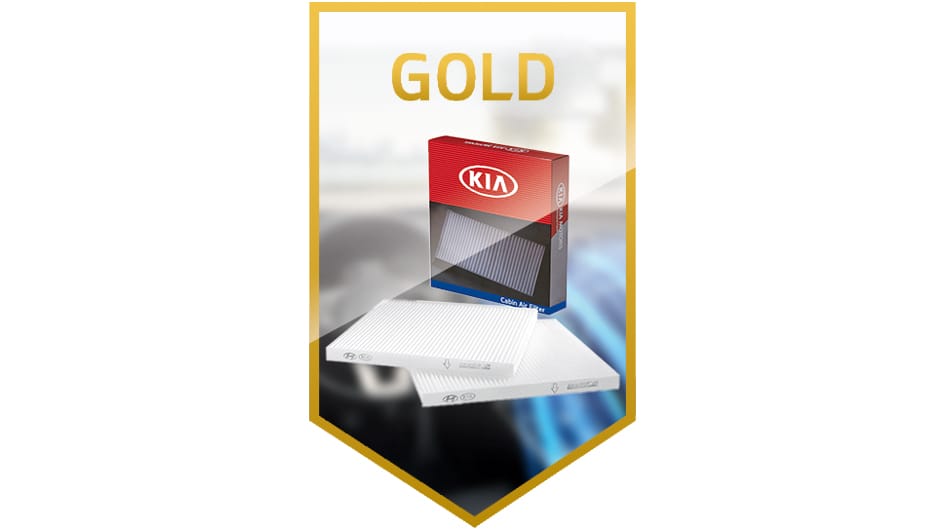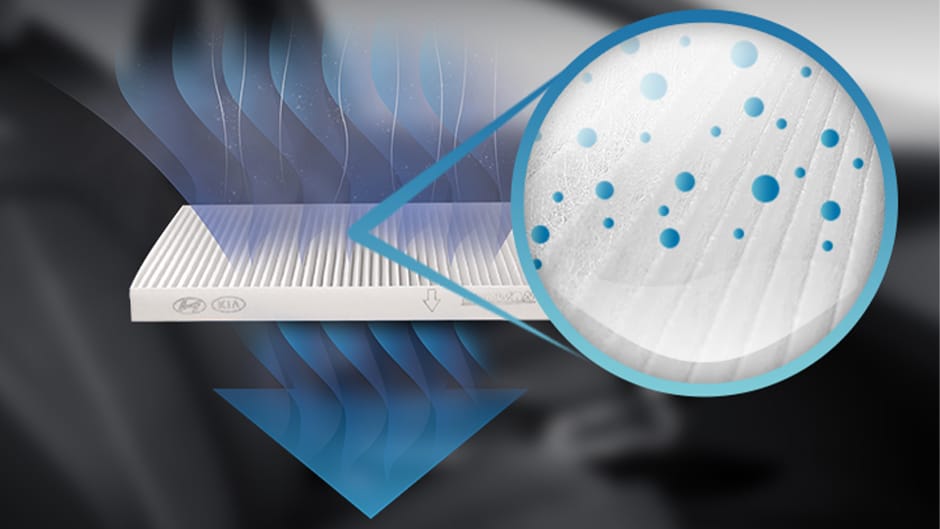



Bacteria, pollen and fungi enter your vehicle through the cabin ventilation and air conditioning system. Once inside the cabin, they can cause problems ranging from disagreeable to dangerous, for drivers and passengers. These include:
• Unpleasant odours
• Allergies including hay fever
• Asthma
Your cabin air filter needs replacing as over time the filter will become less effective as it becomes clogged by filtered particles. This reduces the air flow through the cabin vents and allows dust and allergens to circulate.
Here at Snows Kia, we're offering you the choice of two cleaning options:

SILVER
• Disinfectant spray
• Anti-bacterial/fungal air freshener
£35 incl. VAT

GOLD
• Disinfectant spray
• Anti-bacterial/fungal air freshener
• Cabin filter replacement
£55 incl. VAT
Interior cleaning for health and well-being
Regular cabin air filter replacement is important to ensure fresh and and cleaner air in your Kia’s air con ventilation system. However, sometimes changing the filter alone is not enough. For this reason we also recommend disinfecting the air conditioning system.
Disinfecting your air conditioning system
A deep clean of the air conditioning system using a powerful disinfectant spray to kill bacteria and contaminants which are already inside.
The Kia genuine Cabin Air Filter
The cabin air filter of your Kia is designed to filter the air entering the vehicle. To ensure its effectiveness it requires regular maintenance and replacement. Cabin Air Filter should be replaced at least every 2 years or 20,000 miles based on your maintenance schedule.
A Kia Genuine Cabin Air Filter contains a filtration medium. The medium traps airborne particles before they can enter the ventilation and air conditioning systems and find their way into the vehicle’s interior.

Over time, the trapped particles will clog the filter, reducing the air flow. This cut the efficiency and effectiveness of the air conditioning and ventilation systems and also allows dust an allergens into the air conditioning system. So, it is essential to have your A/C system regularly cleaned and your cabin air filter regularly replaced.
It’s important to replace the cabin air filter in your Kia only with another Kia Genuine Air Filter, designed and engineered for your Kia model. Its perfect fit ensures there are no gaps where dirty air can bypass the filter. Optimum thickness and surface area - with the ideal number and size of pores – provide effective filtration with sufficient airflow.